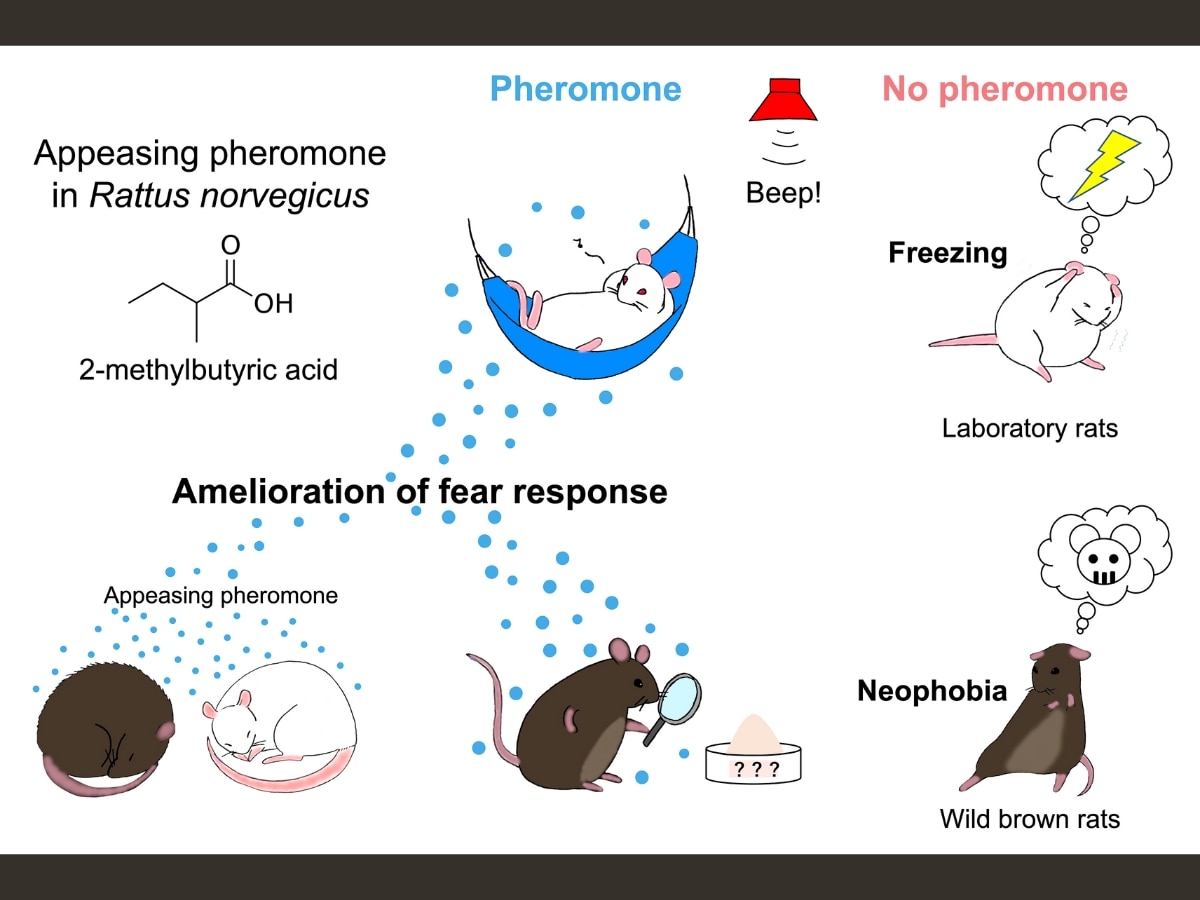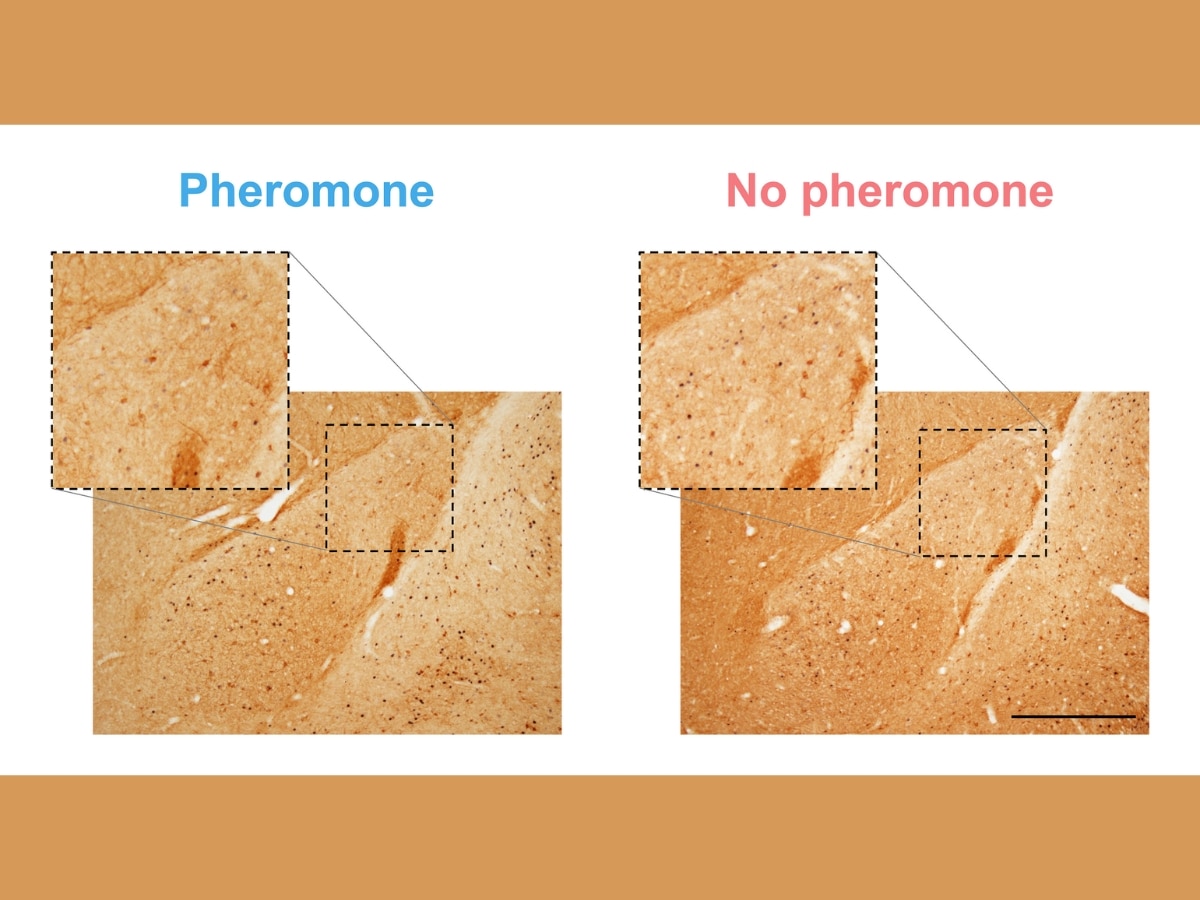(Source: Poll of Polls)
What Happens When A Scared Rat Smells A Calm Rat? Study Unravels Secrets That Can Lead To Humane Pest Control
Scientists have long known that calm rats can reduce the fear of scared and stressed rats, but were not sure of the exact mechanism. Now, a team of researchers has found the pheromone responsible.

Several animals release pheromones, which are endogenous chemical substances secreted by one individual and received by a second individual of the same species, eliciting a response in the latter due to behavioural or hormonal changes. Scientists have long known that calm rats can reduce the fear of scared and stressed rats, but were not sure of the exact mechanism. Now, a team of researchers, including some from the University of Tokyo, has found the pheromone responsible for reducing the fear of scared rats. After demonstrating the effect of this pheromone on laboratory rats and rats in the human environment, the researchers have found a solution which could lead to a new kind of humane pest control, a study, published June 21 in the journal iScience, said.
The researchers studied a rat species called Rattus norvegicus. These are wild brown rats.
How pheromones released from calm rats help reduce fear in scared rats
Rats have relatively high intelligence compared to other mammals, which makes them fascinating animals to study, and understand mechanisms occurring in humans. Within rats belonging to a particular species, individuals in a relaxed state can induce a similar state in nearby rats, so much so that the relaxed rats can calm other rats without any direct interaction. Pheromones secreted by the relaxed rats travel through the air and reach the scared rats, and help calm the emotional state of the latter.
Quoting Yasushi Kiyokawa, the lead author on the paper, a statement released by the University of Tokyo said that the researchers had to be careful about the ways in which they collected and isolated the pheromones involved in the intra-species calming phenomenon, because if they stressed out the rat too much, it would likely affect what pheromones the individual released. Therefore, the researchers were creative and devised a method to collect pheromones from a relaxed rat. They put a calm rat to sleep and used water to absorb pheromones from its neck, Kiyokawa said.
Relaxed rats release a pheromone called 2-methylbutyric acid, or 2-MB, a chemical found in the aromas of cheese and wine. This appeasing pheromone released from a relaxed individual ameliorates the fear in other individuals.

Several rats suffer from neophobia, which is the fear of new things. But the appeasing pheromone can relax scared rats.
In order to be sure that it is this pheromone that helped relax scared rats, the researchers checked if the chemical reduced the fear in other lab rats. The researchers filled one of two chambers with this pheromone to see if the rats showed any preference toward the chemical. They observed that rats indeed preferred the chambers laced with the pheromone, and were comfortable to sniff it.
ALSO READ | Science For Everyone: Supernova, Nebula, Neutron Star — Stages In A Star's Life Cycle
They observed the mechanism using microscopic images from the rats' amygdala, which is the brain site for regulating fear responses. The pheromone helped reduce the production of c-Fos protein, a marker of neural activity, and this proves that 2-MB indeed decreased fear.

How this pheromone could lead to humane pest control
After this, the researchers tested if the same behaviour was observed in wild rats in urban environments.
Kiyokawa said that the researchers tested this at two different locations to see if wild rats would respond to 2-MB, and saw that they responded similarly to the lab rat. Also, synthetic 2-MB helped reduce neophobia, which is important because it is the fear of new things in urban rats which makes it difficult to produce effective traps.
The researchers believe that 2-MB can be used to create a form of humane pest control, and to lure urban rats into non-lethal traps while keeping them calm. This will ensure that once the rats are trapped, they can safely be transported out of the urban environment.








































